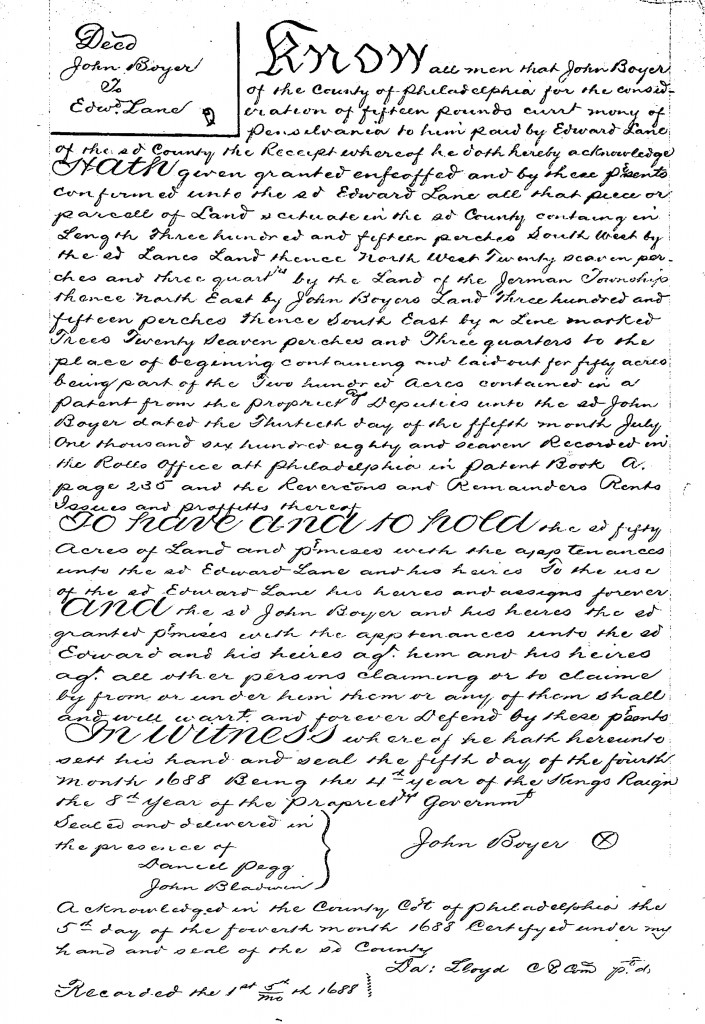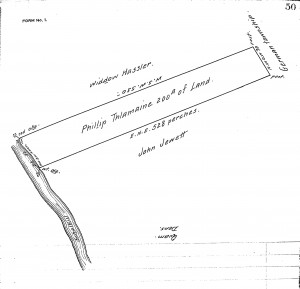The next question about the people on Holme’s map is about their occupations. How did they support themselves and their families? The evidence for occupation comes from many sources—primarily deeds and wills, but occasionally from other places such as letters. For some of the people, almost a quarter of the total, their occupation is unknown. In many cases it can be presumed to be farming, but they are not counted as farmers unless they are actually described this way in a record.
When we break down the numbers of people on the map by occupation and whether they immigrated or not, we see an interesting pattern. Many of the gentlemen and merchants did not immigrate; their interest in the colony was as investors or supporters of Penn’s vision. Many of the artisans and farmers, the “middling sort”, did immigrate. They formed the backbone of the colony—the largest single group. These were the people whom Penn had hoped to attract when he advertised the colony. The Swedes, who were neither immigrants nor non-immigrants, but in a category of their own, were generally farmers.
It may seem paradoxical that more of the occupations are unknown for the immigrants than the non-immigrants. (As will be seen, this is also the pattern for their origins.) This is a result of the records available for them. Many of the non-immigrants were First Purchasers, whose origin and occupation were given in their deed of lease and release from Penn. Many of the immigrants were not First Purchasers; they were late purchasers of land from Penn or bought rights or land from others. The records that include them, such as church or court records, typically do not specify occupation.
Here are the occupations, broken out by immigration status.
| Immigrants | Non-immigrants | Swedes | Total | |
|---|---|---|---|---|
| Women | 23 | 3 | 1 | 27 |
| Artisans | 112 | 16 | 0 | 128 |
| Farmers | 111 | 5 | 21 | 137 |
| Gentlemen | 16 | 21 | 0 | 37 (inc 3 women) |
| Merchants | 61 | 29 | 2 | 92 |
| Services | 22 | 0 | 0 | 0 |
| Other | 23 | 6 | 1 | 30 |
| Unknown | 108 | 9 | 18 | 135 |
| Total | 476 | 89 | 43 | 608 |
There are several interesting points here. As already noted, merchants and gentlemen did not immigrate at the level of farmers and artisans. It might be surprising that so many farmers immigrated, since they would seem to be tied to their land. Obviously many Quaker farmers found a way to leave their land in England (or Ireland or Wales) and start over a new place. The climate in Pennsylvania was comparable, though more extreme, than that of England, but their skills would have served them well. Another interesting point concerns the Swedes. They would have needed some services, such as milling and blacksmithing, and in fact they had a mill, but the names of people who provided those services are unknown. Perhaps some of the Swedes whose occupations are unknown were in fact millers or smiths. Finally, many of the women, especially the widows who headed households, probably engaged in farming, as discussed in the post on classification, though they were never described that way. When women appear in a will or deed they are described by their status, not their occupation. So strong is this status identification for them that some women on the map are described only as “Widow Bond” or “Widow Hurst”. To our modern eyes they are denied the dignity of a given name.
Next: Where were the people from?



